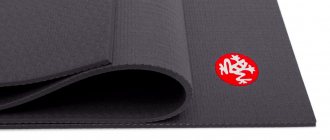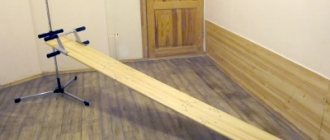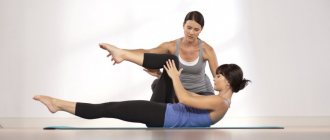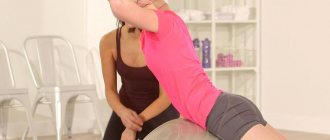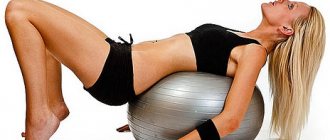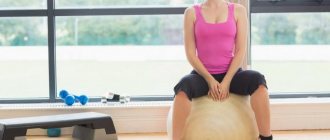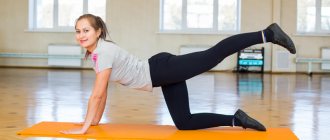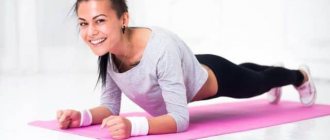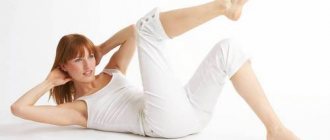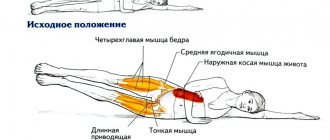With osteochondrosis, intervertebral discs are deformed, the vertebrae move closer to each other, pinching nerve endings and causing acute back pain. Treatment of osteochondrosis depends on the stage of the disease.
This could be medications, the use of manual therapy, massage, or acupuncture. The treatment complex for osteochondrosis includes feasible physical therapy, swimming, walking, and diet. The gym for osteochondrosis is contraindicated in the acute period and in the first stages of rehabilitation after the disease.
At this time, pain is just beginning to subside and the functions of the spine are restored. Especially during this period, an exercise bike is contraindicated for osteochondrosis, and bodybuilding and any exercises that burden the spine are also incompatible with osteochondrosis.
Exercising in the gym for osteochondrosis: harm or benefit
Contrary to popular belief, mindless exercise in the gym can lead to serious complications in spinal diseases. After all, each exercise machine has its own method of application and is designed for a relatively healthy person. Each group of exercise machines strengthens a specific area in the human body.
In addition, each person has his own individual characteristics and problem areas. And if a person decides to strengthen the spine and comes to the gym, then these features should be taken into account when drawing up an individual training program. Only a good specialist can recommend this or that exercise machine to a person with spinal problems due to osteochondrosis.
For example, excessive axial load on the spine can only aggravate the existing disease. Strengthening your back muscles is good for your spine. But even using a specially designed “Roman chair” exercise machine, you can get problems. Since with minimal scoliosis and improper execution of the exercise, the spine deviates to the left or right, which causes muscle stretching on one side and spasm on the other.
Hanging on the bar, which is often recommended, is not completely harmless to the spine. On the one hand, hanging on the bar relieves the load on the spinal discs. But if there is a spasm of the vertebral muscles, then when they are loaded, the muscle fibers can tear. And even after their restoration, adhesions remain, disrupting the free access of blood and lymph to the spine.
Therefore, when visiting a gym with osteochondrosis, you should make sure that the instructor selects a machine that is as gentle as possible on the spine. You need to use the gym to strengthen and heal the spine wisely and only in the remission stage.
Osteochondrosis and sports: pros and cons
There are two big causes of osteochondrosis, directly or indirectly related to sports.
The first can affect people who lift weights - pumping muscles threatens the death of blood vessels, on which adequate nutrition of the spine depends. This, in turn, threatens the same degenerative processes in the cartilage tissue of the intervertebral discs. The second reason is the complete lack of physical activity in a person’s life, and this leads to the deposition of salts in the spine and, as a result, osteochondrosis. Therefore, we can conclude that sports for osteochondrosis is a completely permitted way to improve the patient’s health, but the right approach is important. Unfortunately, many people go the opposite way, believing that since a sad diagnosis has been made, it is now better not to strain their back at all, for fear of pain in the spine. This approach is wrong: competent loads for osteochondrosis can significantly improve the patient’s health.
Training complex for strengthening the spine
When visiting the gym to treat osteochondrosis, you should remember that the main thing in training is working out the spinal muscles. After all, as you know, it is the deep back muscles surrounding the spinal column that fix the vertebrae. When performing a training complex to strengthen the spine, certain rules should be followed:
- Start exercising only if there is no acute pain.
- If any discomfort or pain occurs, reduce the load or exclude the exercise from the complex.
- Train regularly three times a week.
- The lesson must begin with an active warm-up, preparing the main part.
- You need to exercise at a calm pace, taking 5-minute breaks between exercises and monitoring the restoration of breathing during pauses.
- When visiting the gym with osteochondrosis, wear a special belt.
https://youtu.be/toDNwxQTSzI
Now it is necessary to consider the principles of constructing a set of exercises to strengthen the muscles of the spine:
- Exercises that strengthen the muscular corset of the spine are good: lying on a hyperextension bench, bending over with a stick on the shoulders, pull-ups and bending to the side with small dumbbells.
- Stretching the spinal column while hanging on a bar should be used at the end of each session, but no more than 1 minute.
- Completely eliminate axial load on the spinal column during the first 2-3 months (squats and deadlifts). Perform the vertical press while sitting and only with a small weight, leaning your back on the bench.
- Avoid strong arching in the lower back. When doing barbell push-ups, lie down with your lower back flat on the bench, performing hyperextension, and do not raise the shoulder girdle higher than the pelvis.
- Evenly train muscle groups throughout the body, not just the back.
- If you perform the strengthening complex regularly and systematically, good results will become noticeable after starting training within a month or two. But you don’t have to quit classes right away, otherwise the painful symptoms will return again.
- Excessive weights, twisting of the spinal column, excessive bending and arching in the lower back with weighting with dumbbells, vertical loads, that is, pressing the barbell from the chest and behind the head should be avoided.
- Only after long-term training for more than six months and if you feel well, begin to perform exercises in the optimal mode, but excluding sudden movements and constantly listening to the condition of your back. Don't forget to take care of your back so as not to provoke a relapse of the disease.
Strength training for diabetes
a series of exercises with light dumbbells can be used as an introductory course .
The proposed complex for diabetes can be practiced at home, for classes two or three times a week.
In any strength exercise, the positive phase of the movement (effort) is accompanied by exhalation, and the negative phase (return to the starting position) is done while inhaling.
- Swing dumbbells to the sides from a standing position or sitting on a stool. Arms straight, elbows pointing back, dumbbells raised to shoulder level. The pace is average. 8–10–12 reps, 3 sets.
- Curling arms with dumbbells while standing or sitting. In the starting position, the arms are slightly bent; when bent, the elbows are motionless. The pace is average. 8–10–12 x 3.
- Bent over dumbbell row supported on a stool or chair. Tilt to the horizontal with support on your free hand. The back is straight, the gaze is directed forward. The arm with the weight in the initial position is straightened down; when moving, it is bent and held up with the elbow along the body. The pace is average. 8–10–12 x 2 for each hand.
- Push-ups from the knees or in a lying position. Place your hands slightly wider than your shoulders. 10–15–20 x 3.
- Squats. The back is straight, arms folded in front of the chest or extended forward. Knees point towards toes. The heels do not come off the floor. 15–20–30 x 3.
Attention! This small set of exercises can be considered as a universal introductory complex , suitable for most of those who decide to try their hand at strength training.
https://youtu.be/2wK-XTeDtWM
Is it possible to use an exercise bike to improve the health of the spine?
The general belief that cycling only develops leg muscles is a misconception. During active cycling training, both the ankle and gluteal muscles, as well as important muscles in the lumbar corset, are involved. Therefore, a properly used exercise bike to strengthen all these muscles reduces the risk of spinal diseases such as osteochondrosis, radiculitis, and neuralgia.
By regularly using an exercise bike and thereby training the lumbar muscles, you can restore a curved spine.
This is possible if the disease is still in its early stages. So the exercise bike not only tightens the muscles of the legs and thighs, but also heals the spine, corrects posture and makes the gait fly.
Watch the video on this topic and take care of the health of your spine!
How to deal with the disease
Medicine views it precisely as an age-related phenomenon - the beginning of aging of the spinal column. But during this period, disturbances from the spine and its structures are not yet so great.
They are limited only by the “weakening” of the outer shell of the disc and a slight convergence of the bones that separate the intervertebral disc.
Therefore, exercising in the gym for osteochondrosis is not contraindicated - there are not enough reasons to refuse them at this stage, although they may appear in the foreseeable future if the problem cannot be solved.
Is there any benefit
As for exercises in the gym for osteochondrosis, weightlifting, like any other sport, can both further harm the back and help it slow down degeneration.
Our spine needs an even alternation of feasible loads with proper rest, and it is adapted to movement much better than to sitting for a long time in the same position.
Therefore, everything will be fine if:
- work strictly in the correct technique;
- take only feasible weights;
- relieve spasms, fatigue and inflammation in the back muscles after each workout through relaxing procedures.
In addition, the gym for cervical osteochondrosis requires special attention when performing all exercises on the muscles of the arms and shoulders. It is not recommended for this:
- stretch your neck forward, “helping” the muscles contract;
- use momentum by swinging the weights instead of just lifting them;
- do exercises for the upper abdominals, since stretching the neck and overstraining its muscles is inevitable.
The gym for osteochondrosis of the lumbar region is also not at all contraindicated, and even, on the contrary: let’s say, running with it is an incomparably worse idea.
However, with such localization of the process, it is more reasonable to perform deadlifts, chest presses and other exercises that create a high load on the lower back in a machine rather than with free weight. Or, in any case, they should not be attempted without a tanned leather securing belt.
Working with really heavy weights (for example, in order to gain muscle mass) should only be done in an orthopedic rigid corset. If the sports complex where we work out has a swimming pool, you should not deny yourself a half-hour “swim” in it after each workout, as it perfectly relieves the entire musculoskeletal system.
Content
With osteochondrosis, intervertebral discs are deformed, the vertebrae move closer to each other, pinching nerve endings and causing acute back pain. Treatment of osteochondrosis depends on the stage of the disease.
This could be medications, the use of manual therapy, massage, or acupuncture. The treatment complex for osteochondrosis includes feasible physical therapy, swimming, walking, and diet. The gym for osteochondrosis is contraindicated in the acute period and in the first stages of rehabilitation after the disease.
At this time, pain is just beginning to subside and the functions of the spine are restored. Especially during this period, an exercise bike is contraindicated for osteochondrosis, and bodybuilding and any exercises that burden the spine are also incompatible with osteochondrosis.
What not to do
With regard to bodybuilding, the worst limitation of all that osteochondrosis imposes is the inability to perform half of the exercises with free weights, especially a barbell. In particular, both cervical and lumbar (the most common) types of osteochondrosis exclude:
- squat and half squat with a barbell on the shoulders from behind;
- squat with a barbell on the shoulders in front (that is, when the bar rests on the collarbones);
- deadlift of a barbell or dumbbells;
- bending over with a barbell on your shoulders;
- pulling dumbbells or barbells to the chest or stomach;
- classic deadlift.
And the good news is that almost all of these exercises can be replaced by working in a simulator. In this case, the rate of mass gain will, of course, decrease, but the detailing will go “like clockwork,” and we will maintain the overall good shape. You can strengthen your back and buttocks without a barbell using:
- pull-ups on the horizontal bar;
- traction of the upper block (both behind the head and to the collarbones);
- traction of the lower block to the stomach;
- active work with a Roman chair - performing direct and reverse hyperextension, but without weights on the shoulders and with the hands not behind the head, but crosswise on the chest.
As we will see for ourselves soon after starting training, they quickly relieve the initial symptoms of osteochondrosis in any department due to their ability to accelerate the regeneration of bones and cartilage. This is the natural result of the body's attempt to provide stressed muscles with everything they need to repair and grow.
However, it is precisely at this moment that it is important for us not to overstrain ourselves - in the sense that the rate of tissue regeneration cannot be infinitely high, and it always increases gradually.
Therefore, for the next six months, or even more, we need to forget about performing the approach to failure or use the 1-2 repetition technique (work with maximum weight).
“Warming up” before training also needs to be done with caution. Jogging and jumping rope, which are classic in all respects (most often used before training the lower leg muscles) are no longer suitable for us. Therefore, it is better to use a bicycle or skis, setting the route to difficulty 2 or higher.
It is better to complete each approach not by simply stretching the muscles being loaded this time, but by hanging on the horizontal bar - of course, without weights, swinging and other “acrobatics”. You should visit the pool 2-3 times a week.
It is advisable to do this after training, but only if there is such an opportunity. And it is doubly advisable to attend regular (not sports/therapeutic/exotic) relaxing massage sessions twice a week.
https://youtu.be/MeWequJJuYc
If you want to get more information like this from Alexandra Bonina, check out the materials on the links below.
Additional useful information:
See more useful materials on my social networks:
Denial of responsibility
The information in the articles is for general information purposes only and should not be used for self-diagnosis of health problems or for therapeutic purposes. This article is not a substitute for medical advice from a doctor (neurologist, therapist). Please consult your doctor first to know the exact cause of your health problem.
I will be very grateful if you click on one of the buttons and share this material with your friends
